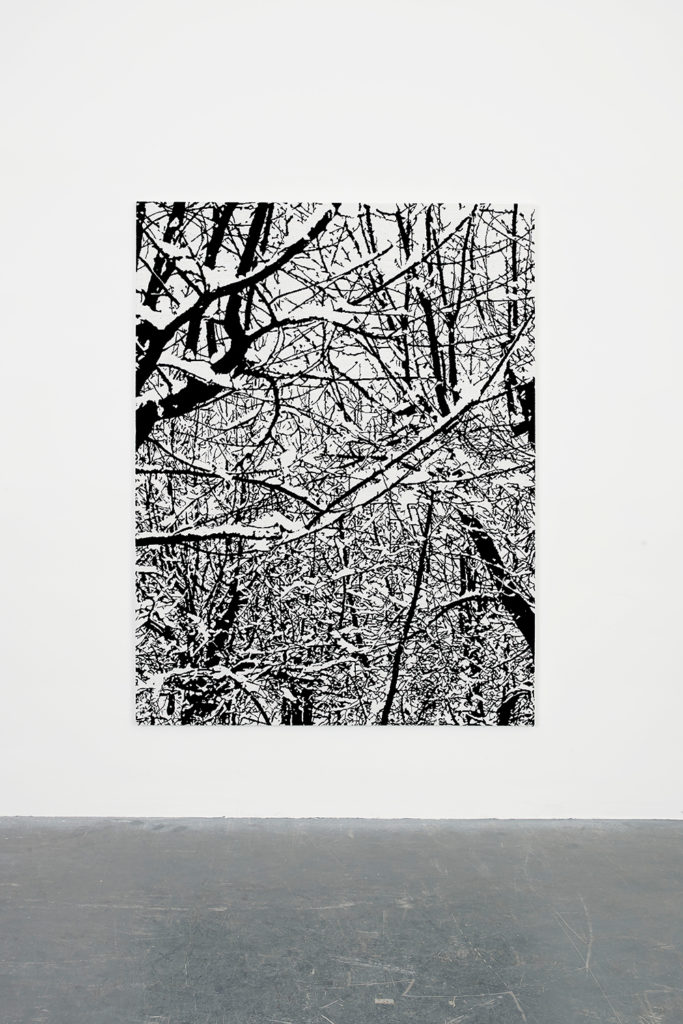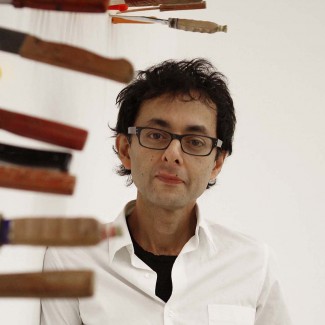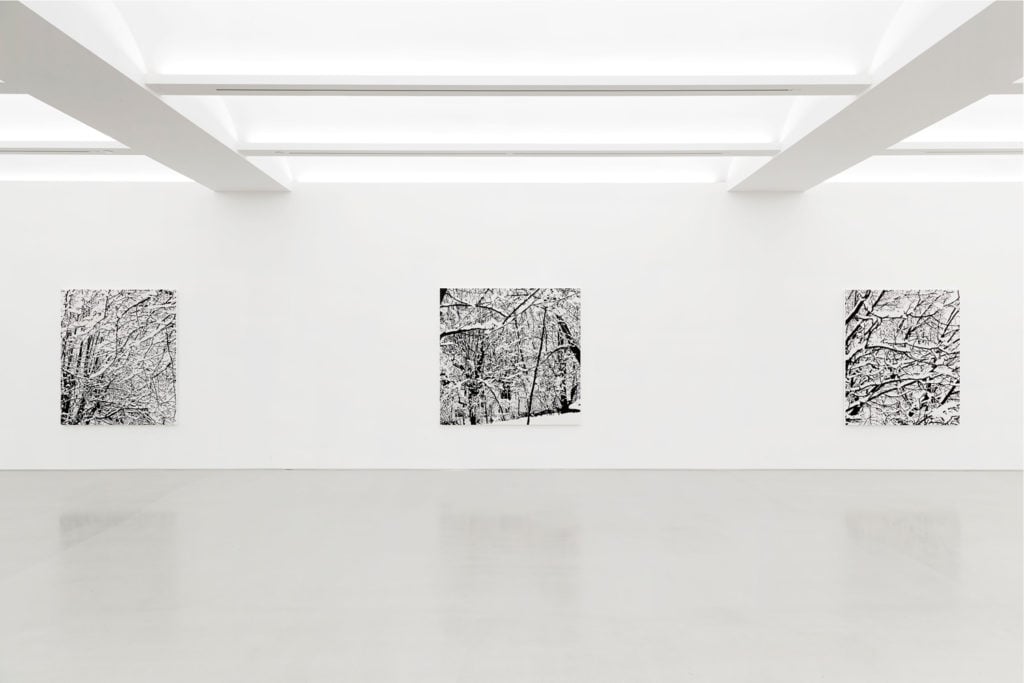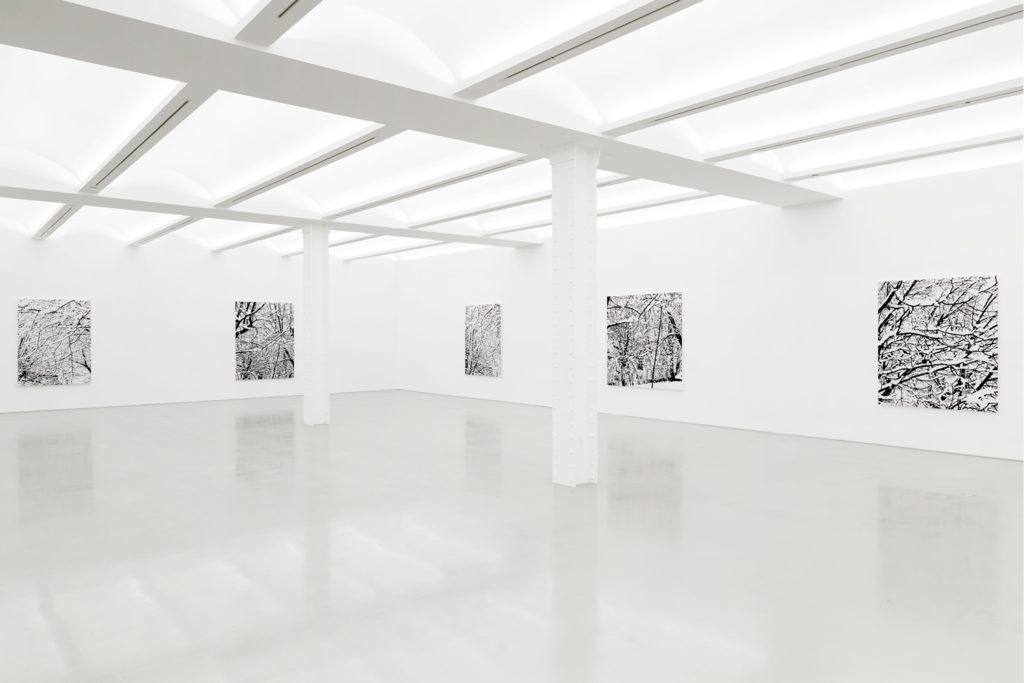How Farhad Moshiri Transformed a Wintry Patch of Cherry Trees Into a Moving Meditation on Life in Tehran


Artnet Gallery Network

Walk into Perrotin Gallery’s New York outpost these days and you might imagine that someone hit a seasonal fast-forward button: the walls are hung with stark, black-and-white pictures of tree branches blanketed in freshly-fallen snow. Called “Snow Forest,” it’s Farhad Moshiri’s fifth show with the gallery, and it’s a welcome departure for the artist. While the works are rendered with his signature style of hand-embroidered beads on canvas, the series nonetheless shows the Iranian artist making a dramatic break with the Pop-art-inspired rhetoric for which he’s become well known, retreating into more contemplative depictions of nature.
The winter imagery does evoke a number of art-historical references, most notably a series of austere winter photographs that Moshiri’s famed countryman the artist-filmmaker Abbas Kiarostam made after the onset of the Iranian revolution. However, the source material of Moshiri’s work has its own backstory: the series is derived from a handful of photos the artist shot outside own his house in Tehran, the morning after a snow storm. Below, Moshiri explains to artnet News in his own words the significance of the winter imagery, and why he was compelled to make embroideries from it.
****

Farhad Moshiri. Courtesy of Perrotin.
“One winter day in the year 2015, I woke up to find everything under a three-inch blanket of fresh snow.
Nothing is more refreshing than a walk in that weather. I grabbed my camera and went outside quickly, because I tend to lose interest when the snow starts to melt off the branches.
My wife and I have been living in the outskirts of Tehran, where one gets less pollution and more trees—cherry trees, in our case. We bought the land and had to chop down some trees to make space for a home/studio, but we planted many more afterwards, mainly cherry trees. The area we live in is known for its cherry orchards, and I have been photographing the blossoms as they appear for a very short period every year.
As mesmerized as I become by their beauty, I have never given myself the green light to make one into a painting or embroidery because a cherry blossom is a cherry blossom no matter how you look at it, period. Wait two weeks and you get beautiful red cherries on the entire tree, another heavenly sight to behold, but still I’m confronted with the same problem: I can’t paint cherries unless I simply want to paint cherries, which I don’t want to do.

A view Farhad Moshiri’s “Snow Forest” at Perrotin, New York, 2017. Photo: Guillaume Ziccarelli. Courtesy of Perrotin.
When winter arrives and every single wet branch is covered by a layer of snow, something intriguing happens. Suddenly I no longer look at the trees as trees. They become curious abstractions, complex compositions, a calligraphy rendered by nature, a Jackson Pollock/Santa Claus collaboration. If the sky happens to be cloudy the photographs will look practically high-contrast in black and white. It is actually one of the rare moments that the weather renders nature in black and white.
When I was in high school, in Idyllwild, California, we used to get five months of heavy snow. I took a photography class then. Every student had a plethora of photos of white hills with black twigs sticking out of them, or a lonely tree sitting in a snow-covered valley. There was also a monthly photography magazine that regularly featured “poetic” winter photography. In other words, people have always loved to take photographs in snow, and always will.
Many artists have done amazing black-and-white abstract compositions. For me, this was a personal experience. When I was out there trying to capture that special shot, it felt like nothing else mattered except that moment, and when I look at the finished work I figure that all I wanted to say was this: ‘I was there when all of this happened, and it was right outside my doorstep.’”
—Farhad Moshiri, 2017

View of the exhibition Farhad Moshiri “Snow Forest” at Perrotin, New York, 2017. Photo: Guillaume Ziccarelli. Courtesy of Perrotin.
“Snow Forest” is on view at Perrotin through December 23, 2017. “Go West,” the Iranian artist’s first U.S. retrospective, is on view at The Andy Warhol Museum in Pittsburgh through January 14, 2018.